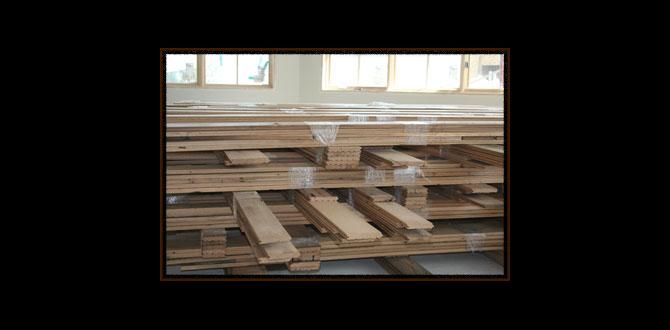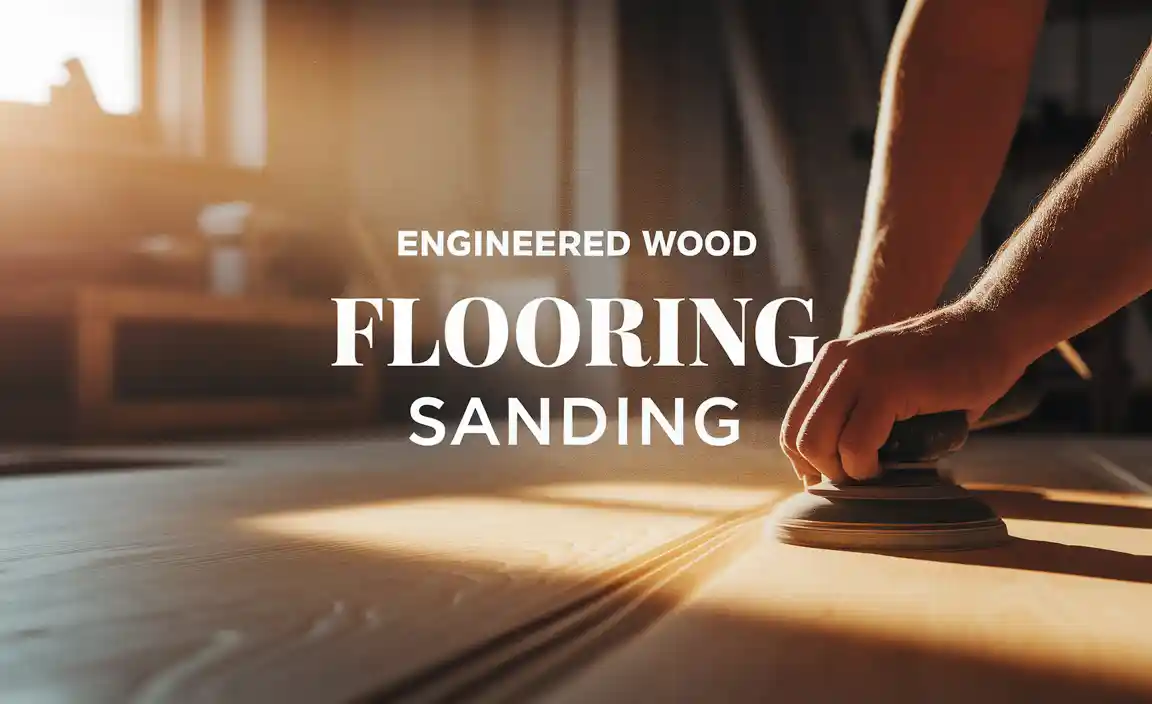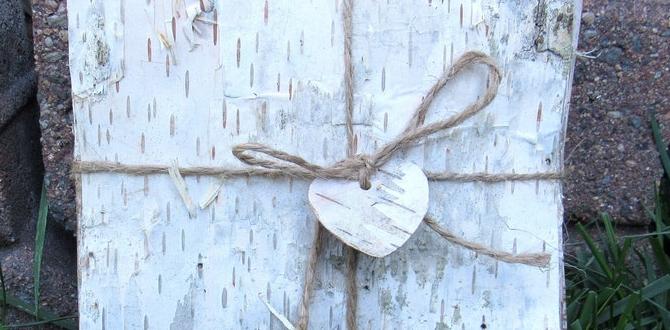Quick Summary
Choosing the right nailer—brad, finish, or pin—depends on your project’s needs. Brad nailers are for trim and molding where few nails show. Finish nailers handle heavier trim and cabinetry, offering more holding power. Pin nailers are for delicate tasks like attaching small decorative pieces, leaving almost invisible marks.
Hey there, fellow DIYers! Jack Shaffer here from Nailerguy. Ever stood in the tool aisle, staring at a wall of nailers, and felt a little overwhelmed? You’re not alone! Deciding between a brad nailer, a finish nailer, and a pin nailer can seem tricky at first. They all drive nails, so what’s the big deal? Well, each one has a special job, and picking the right one makes your projects look pro and saves you headaches. Let’s clear up the confusion and get you nailing with confidence!
Table of Contents
Understanding the Tiny Differences: Brad vs. Finish vs. Pin Nailers
When you’re diving into woodworking or home improvement projects, having the right tool makes all the difference. Nailers are a huge help, but they aren’t all created equal. The main types you’ll see for finer woodworking tasks are brad nailers, finish nailers, and pin nailers. They might look similar, but they use different size nails, have different power levels, and are best suited for specific jobs.
Think of it like this: you wouldn’t use a hammer to hang a framed picture, and you wouldn’t use a sledgehammer to build a birdhouse. It’s all about matching the tool to the task. The key differences between these three nailers boil down to the size of the nail they shoot, how much holding power that nail provides, and the level of visibility the nail head leaves behind.
Getting this right means cleaner work, stronger joints, and less time spent fixing mistakes. We’re going to break down each one so you can confidently grab the perfect nailer for your next project.
Brad Nailers: The Trim and Molding Maestro
Brad nailers are fantastic for projects where you need to fasten trim, molding, or other decorative wood pieces without the fasteners being too noticeable. They shoot thin nails that are made of relatively soft metal, and they typically have a very small head, or no head at all (often called brads).
Because the nails are so slender, brad nailers aren’t designed for structural work. They won’t hold heavy pieces together in the way a framing nailer would. Their main strength lies in their ability to drive thin nails cleanly and with minimal damage to the wood surface.
What are Brad Nailers Best For?
- Attaching delicate trim and molding (like baseboards, crown molding, window casings).
- Assembling small cabinets or drawers.
- Securing decorative wood pieces or panels.
- Lightweight framing for craft projects.
- Anywhere you need a nail that’s mostly hidden.
Brad Nailer Nail Sizes
Brad nails typically range from 5/8 inch up to 2 inches in length. The most common sizes you’ll encounter are 1 ¼ inch, 1 ½ inch, and 1 ¾ inch. The nails themselves are very thin, usually around .047 to .062 inches in diameter.
Pros of Using a Brad Nailer:
- Leaves very small, often unnoticeable, holes.
- Ideal for delicate materials and trim work.
- Reduces the need for extensive filling and sanding of nail holes.
- Relatively lightweight and easy to maneuver.
Cons of Using a Brad Nailer:
- Nails have low holding power; not suitable for structural applications.
- Can sometimes bend or break if driving into very hard wood.
- May require a bit of wood glue for added strength on larger trim pieces.
Finish Nailers: The Workhorse for Woodworking
Finish nailers are the next step up in terms of power and nail size. They’re designed to handle slightly larger and heavier trim work, as well as tasks where you need a nail with more holding power than a brad nail can provide. The nails they use are thicker and have a small, distinct head that offers better grip.
When you’re installing thicker baseboards, door frames, chair rails, or even assembling furniture where some structural integrity is needed, a finish nailer is usually the go-to tool. They can sink their nails without splitting many types of wood, and the nail head, while visible, is small enough to be easily filled and concealed.
What are Finish Nailers Best For?
- Installing thicker trim (baseboards, chair rails, crown molding).
- Attaching door and window casings.
- Building cabinets and face frames.
- Assembling furniture components.
- Any job requiring a nail with more holding power than a brad nail.
Finish Nailer Nail Sizes
Finish nails are thicker than brad nails, typically ranging from .077 to .092 inches in diameter. They come in lengths from 1 ¼ inch up to 2 ½ inches. The most common sizes are 1 ½ inch, 1 ¾ inch, and 2 inches. The distinct head on a finish nail is essential for its holding power.
Pros of Using a Finish Nailer:
- Provides significantly more holding power than a brad nailer.
- Handles thicker trim and heavier applications reliably.
- Nail heads, though visible, are easily filled and painted over.
- Minimizes wood splitting compared to manual nailing.
Cons of Using a Finish Nailer:
- Leaves visible nail heads that require filling.
- Slightly larger nail holes compared to a brad nailer.
- Can be heavier than brad nailers, requiring more effort for extended use.
Pin Nailers: The Master of Invisible Fastening
When you need to attach tiny pieces of trim, craft delicate wood projects, or work with very thin materials where even a brad nail would be too much, the pin nailer is your best friend. These nailers drive incredibly fine, headless or micro-headed nails that are almost invisible once they’re in place.
Pin nailers are perfect for the most delicate of tasks. Think about attaching small decorative trim, holding parts in place while glue dries on fine woodworking projects, or joining small components where you absolutely do not want any visible fastener marks. They are the least powerful of the three, and the nails they use offer minimal holding power, relying more on glue for the strength of the joint.
What are Pin Nailers Best For?
- Attaching very small, delicate trim or embellishments.
- Securing tiny craft wood pieces.
- Holding mitered corners perfectly in place while glue sets.
- Working with thin veneers or delicate paneling.
- Any application where fastener visibility is completely unacceptable.
Pin Nailer Nail Sizes
Pin nails are unbelievably thin, typically ranging from .032 to .040 inches in diameter. They are available in lengths from ½ inch up to 1 ¼ inches. The key feature is that they are either completely headless or have a microscopic head that is barely discernible.
Pros of Using a Pin Nailer:
- Leaves virtually invisible marks, making them perfect for delicate work.
- Ideal for very thin materials and tiny projects.
- Extremely easy to use and leaves no noticeable holes to fill.
- Lightweight and easy to handle for precise placement.
Cons of Using a Pin Nailer:
- Nails offer almost no structural holding power; glue is always required for strength.
- Not suitable for anything beyond the most delicate tasks.
- Can easily be driven too deep if the wood is soft, potentially becoming difficult to remove.
Comparison Table: Brad vs. Finish vs. Pin Nailer
To help you visualize the differences, here’s a quick comparison of what each nailer is designed for:
| Feature | Brad Nailer | Finish Nailer | Pin Nailer |
|---|---|---|---|
| Nail Diameter | Thin (.047-.062 inches) | Medium (.077-.092 inches) | Very Thin (.032-.040 inches) |
| Nail Length | 5/8″ – 2″ | 1 ¼” – 2 ½” | ½” – 1 ¼” |
| Nail Head | Small or headless | Small, distinct head | Headless or micro-head |
| Holding Power | Low | Medium | Very Low (relies heavily on glue) |
| Visibility of Mark | Minimal | Visible, but easily filled | Virtually invisible |
| Primary Use | Light trim, molding, decorative pieces | Heavier trim, cabinets, furniture components | Delicate crafts, tiny trim, invisible fastening |
Choosing the Right Nailer for Your Project: A Practical Guide
So, how do you decide which one to grab off the shelf? It really comes down to the specifics of what you’re building.
When to Grab a Brad Nailer
If you’re working on installing new baseboards in a bedroom, putting up crown molding, or adding decorative trim around a window, a brad nailer is likely your best bet. You want the nails to be mostly invisible, and the brad nailer excels at this. For most standard home trim work, the holding power of brad nails is perfectly sufficient, especially when combined with woodworking glue.
For examples of trim projects, you can find great inspiration and techniques on sites like This Old House.
When to Reach for a Finish Nailer
If you’re tackling more substantial projects, like building a cabinet from scratch, installing thicker door casings, or attaching a robust chair rail, a finish nailer will provide the extra strength you need. The slightly thicker nails and their heads offer a more secure hold. Remember, you’ll have visible nail heads, but they’re easily concealed with wood filler and paint. This is also a great choice for projects that involve joining thicker pieces of wood where you want a clean look without visible screws.
For more on choosing the right nailer, resources like Family Handyman offer valuable insights.
When a Pin Nailer is the Only Option
Imagine you’re working on a miniature dollhouse, adding tiny decorative elements to a picture frame, or joining two small pieces of wood for a craft where a nail head would ruin the aesthetic. That’s where the pin nailer shines. It’s for those ultra-delicate situations where precision and complete invisibility are paramount. Always use glue with pin nails; they’re essentially just tiny locators.
Powering Your Nailer: Pneumatic, Cordless, and Electric Options
Once you’ve decided on the type of nailer, you’ll also need to consider how it’s powered. The three main options are pneumatic (air-powered), cordless (battery-powered), and electric (corded).
Pneumatic Nailers
These are the classic workhorses. They require an air compressor and a hose to operate. They are generally lighter than cordless models, powerful, and have a lower price point for the tool itself. However, you need to factor in the cost and space for a compressor and the inconvenience of managing the air hose.
- Pros: Lightweight, powerful, less expensive tool, no batteries to charge.
- Cons: Requires an air compressor and hose, less portable, air compressor can be noisy.
Cordless Nailers
Cordless, battery-powered nailers have become incredibly popular. They offer fantastic portability and convenience – no hoses, no compressors. They are ready to go anywhere. Modern battery technology means they are powerful enough for most tasks, though they can be heavier and more expensive upfront than pneumatic models. The batteries also need to be charged.
- Pros: Ultimate portability, no hoses or compressors needed, versatile for job sites and home use.
- Cons: Heavier due to battery, more expensive tool cost, batteries need charging, can be less powerful than high-end pneumatic options.
Corded Electric Nailers
While less common for brad, finish, and pin nailers compared to framing or construction nailers, corded electric models do exist. These plug directly into an outlet. They offer continuous power without worrying about battery life or air pressure, but they are tethered by a cord, which can limit mobility and create a tripping hazard.
- Pros: Consistent power supply, no battery charging or air compressor needed.
- Cons: Limited by cord length, potential tripping hazard, less portable.
Safety First: Always Nail Responsibly
No matter which nailer you choose, safety is paramount. Power tools are not toys, and treated properly, they provide years of reliable service. Here are some essential safety tips:
- Read the Manual: Always read and understand your nailer’s instruction manual before operating it.
- Wear Safety Glasses: Essential! Always wear ANSI-approved safety glasses to protect your eyes from flying debris or ricocheting nails.
- Keep Fingers Away: Never place your fingers near the nose of the nailer or in the path of the nail. Always keep your “trigger hand” away from the firing mechanism when not actively nailing.
- Never Point at Anyone: Treat the nailer like a firearm – never point it at yourself or anyone else.
- Secure Your Workpiece: Ensure your workpiece is securely clamped or held down. A nailer can cause wood to jump unexpectedly.
- Use Correct Fasteners: Always use the specific type and size of nails recommended for your nailer. Using the wrong fasteners can damage the tool or cause malfunctions. For nail specifications, check the manufacturer’s recommendations.
- Disconnect Power When Not in Use: For pneumatic nailers, disconnect the air hose. For cordless and electric, remove the battery or unplug the tool when changing nails, performing maintenance, or when not in use.
- Be Aware of Your Surroundings: Make sure there’s no one behind the workpiece. A nail could pass through the material.
Adhering to these safety practices is a crucial step toward a successful and injury-free DIY experience. For more on power tool safety, the Occupational Safety and Health Administration (OSHA) offers comprehensive guidelines.
Frequently Asked Questions (FAQ)
Q1: Can I use a brad nailer for framing a small project?
A: Generally, no. Brad nails are too thin and don’t have enough holding power for structural framing. They are meant for trim and decorative work where appearance is key, not for holding heavy loads together.
Q2: Which nailer leaves the most invisible mark?
A: The pin nailer leaves the most invisible mark. It uses very thin, headless pins that are barely noticeable, making it ideal for delicate projects or applications where you don’t want any visible fastener holes.
Q3: Do I need to fill nail holes with a pin nailer?
A: Typically, no. The pin nails are so small and often headless that they don’t leave a noticeable hole to fill. If a slight dimple is created in very soft wood, it’s usually minor and can be easily smoothed out.
Q4: What’s the difference in holding power between a finish nailer and a brad nailer?
A: A finish nailer offers significantly more holding power because it drives thicker nails with small heads that grip the wood better. A brad nailer uses much thinner nails with little to no head, so they provide less mechanical grip.
Q5: Can a finish nailer be used for the same jobs as a brad nailer?
A: Yes, a finish nailer can often do the job of a brad nailer, but it will leave a visible nail head that needs filling. It’s usually overkill for very delicate trim where you want a completely seamless look, but it works for everything a brad nailer does and more.


